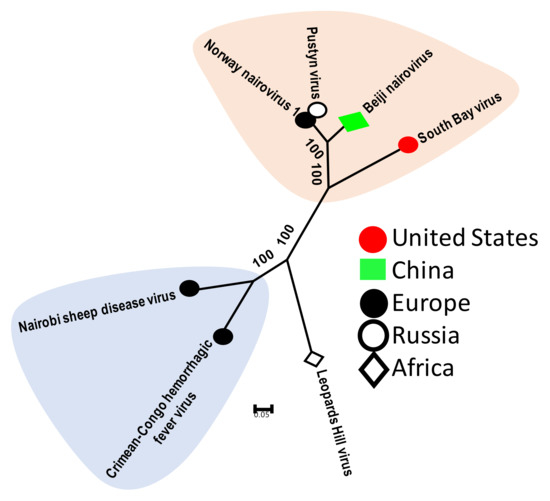Comment; I’ve known that Ticks & Borrelia carry pathogens, had no idea there were so many viruses and the intricacies of geographic distribution. More to follow.

andAmit Kapoor 2,3,*

1The Center for Infectious Disease Dynamics, Department of Biology, The Pennsylvania State University, University Park, PA 16802, USA2Center for Vaccines and Immunity, Research Institute at Nationwide Children’s Hospital, Columbus, OH 43205, USA3Department of Pediatrics, Ohio State University, Columbus, OH 43205, USA*Author to whom correspondence should be addressed.Viruses2019, 11(6), 529; https://doi.org/10.3390/v11060529Received: 21 March 2019 / Revised: 7 May 2019 / Accepted: 29 May 2019 / Published: 7 June 2019(This article belongs to the Special Issue Emerging Viruses) Full-Text | PDF [4382 KB, uploaded 20 June 2019] | Figures
Abstract
Ticks are vectors of several pathogens that can be transmitted to humans and their geographic ranges are expanding. The exposure of ticks to new hosts in a rapidly changing environment is likely to further increase the prevalence and diversity of tick-borne diseases. Although ticks are known to transmit bacteria and viruses, most studies of tick-borne disease have focused upon Lyme disease, which is caused by infection with Borrelia burgdorferi. Until recently, ticks were considered as the vectors of a few viruses that can infect humans and animals, such as Powassan, Tick-Borne Encephalitis and Crimean–Congo hemorrhagic fever viruses. Interestingly, however, several new studies undertaken to reveal the etiology of unknown human febrile illnesses, or to describe the virome of ticks collected in different countries, have uncovered a plethora of novel viruses in ticks. Here, we compared the virome compositions of ticks from different countries and our analysis indicates that the global tick virome is dominated by RNA viruses. Comparative phylogenetic analyses of tick viruses from these different countries reveals distinct geographical clustering of the new tick viruses. Some of these new tick RNA viruses (notably severe fever with thrombocytopenia syndrome virus and Heartland virus) were found to be associated with serious human diseases. Their relevance to public health remains unknown. It is plausible that most of these newly identified tick viruses are of endogenous origin or are restricted in their transmission potential, but the efforts to identify new tick viruses should continue. Indeed, future research aimed at defining the origin, the ecology and the spillover potential of this novel viral biodiversity will be critical to understand the relevance to public health. View Full-TextKeywords: Emerging infectious disease; climate change; flavivirus; Jingmen; Alongshan; Ixodes; Haemaphysalis; Dermacentor; Ambylomma; Hyalomma▼ Figures


Figure 1This is an open access article distributed under the Creative Commons Attribution License which permits unrestricted use, distribution, and reproduction in any medium, provided the original work is properly cited (CC BY 4.0).
- COVID UPDATE: What is the truth? - 2022-11-08
- Pathologist Speaks Out About COVID Jab Effects - 2022-07-04
- A Massive Spike in Disability is Most Likely Due to a Wave of Vaccine Injuries - 2022-06-30

